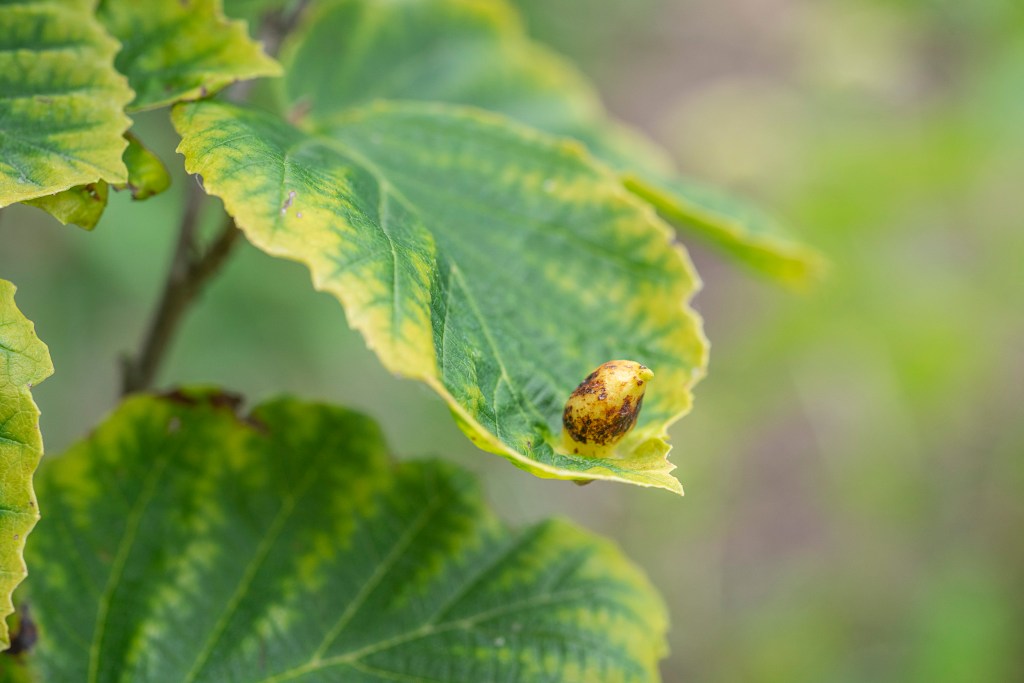There are a few odd-looking, cone-shaped bumps on the leaves of the witch hazels I planted last year. The plants seem to be growing well otherwise. Is this something that I need to treat?
—Bethemy Mota, Evanston
This sounds to me like your witch hazels have galls. Insect and mite galls are common on trees and shrubs throughout the Chicago area and are generally nothing to be concerned about. Leaf galls rarely cause serious harm because unaffected leaf tissue on the plant and even on the same leaf will continue to produce food for the plant. A hefty infestation of stem or twig galls may cause more serious harm to some trees and shrubs, but it is an unusual occurrence and is not anything like what you are describing with your shrubs.
You may have a recurrence of these galls next year in your garden. Most galls are caused by native insects and mites that are attacked by parasitic wasps and other natural enemies that serve to control their populations naturally. As the population of gall insects increases, so do the natural enemies. That way, infestations can come and go over a period of years.
Insecticide applications rarely provide any effective control of these insects and mites. The plant will wall off and compartmentalize the insect or mite as it feeds. This creates the galls, or cone-shaped bumps, you see in your plants. Since the plant’s nutrient- and water-conducting tissues have been “walled off” and greatly reduced from the gall, systemic insecticides that are transported inside the plant are not effective in killing the gall-forming insects while they are feeding. Also, since the gall tissue is different from the plant, insecticides are generally not well absorbed into the gall. This is a good example of the importance of identifying the insect causing a problem and then carefully considering the necessity to apply an insecticide.
Adult gall-making insects and mites are the only life-cycle stages outside the gall, so contact insecticides do not work well either. Most gall makers are wasps that are difficult to control, even when you time the application correctly. Just continue with a normal maintenance program for your shrubs. With the current dry conditions, the shrub will benefit from supplemental water since it was planted last year and is still being established. There is no need to be concerned about the galls or to take any special action to protect your shrubs.
For more plant advice, contact the Plant Information Service at the Chicago Botanic Garden at plantinfo@chicagobotanic.org. Tim Johnson is senior director of horticulture at the Chicago Botanic Garden.

